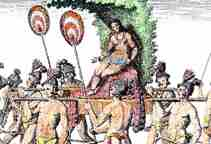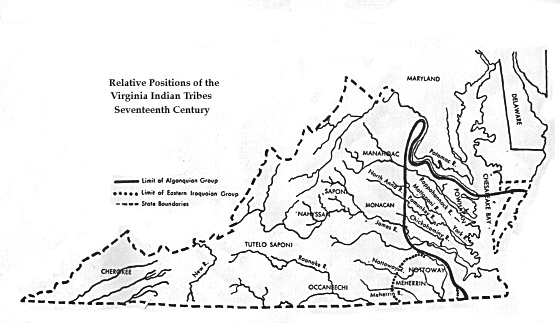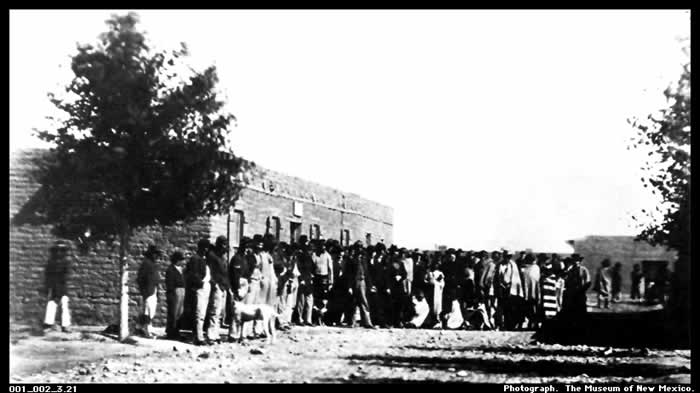|
May
22, 1863:
|
As
a part of the "Owens Valley War" in California,
Paiute Chief Captain George arrives at Camp Independence.
He tells the soldiers the Paiutes want peace. This effectively
ends the war.
|
|
|
May
23, 1838:
|
Under
the provisions of the New Echota Treaty of December 29, 1835,
this the deadline for Cherokees to emigrate to the Indian
Territory (present day Oklahoma). Any Cherokees still east
of the Mississippi River, after today, are forced to leave.
Only an estimated 2,000 Cherokees have emigrated to the Indian
Territory by today's date, according to government estimates.
General Winfield Scott is charged with removing the recalcitrant
Cherokees. Many are forced from their homes at bayonet point.
The illegal treaty is publicly proclaimed by President Jackson,
two years ago, on this date.
|
|
|
May
24, 1539:
|
Mexican
Viceroy Don Antonio de Mendoza has decided to send an expedition
to search for wealthy cities north of Mexico. On March 7,
1539, Friar Marcos de Niza started the expedition from Culiacan.
Accordiong to Niza’s journal, he finally sees Cibola,
although he never sets foot in the pueblo. His report will
lead to future expeditions looking for the "Seven Cities
of Gold."
|
|
|

The
"Lady of Cofitachequi"
|
|
May
25, 1776:
|
The United
States Congress resolves that it would be "highly expedient"
if they can engage Indians to fight on their side of the Revolutionary
War.
|
|
|
May
26, 1540:
|
The
"Lady of Cofitachequi" has been taken with the de
Soto expedition, against her will. With a large quantity of
the pearls that de Soto's men took from her village, she escapes.
|
|
|
May
27, 1607:
|
Virginia
has it's first significant battle between Indians and European
settlers.
|
|
|

Relative
Positions of the Virginia Indian Tribes in the Seventeenth
Century
|
|
|
May
28, 1851:
|
One
in a series of treaties is signed with California Indians
at Dent's and Ventine's Crossings. The purpose of the treaty
is to reserve lands for the Indians and to protect them from
angry Europeans.
|
|
|
May
29, 1677:
|
Pamunkey,
Roanoke, Nottaway and Nansemond Tribes of the Powhatan Confederacy
sign a treaty with the English in Virginia.
|
|
|
May
30, 1650:
|
An
ordinance is passed against the making of counterfeit, or
"fake," wampum by the Directors of the Council of
the New Netherlands. European manufacturers are producing
the fakes, which are being used to pay Indians.
|
|
|

Tensions
between the Navajo Indians and American military forces in
the New Mexico Territory resulted in the Navajo War, which
lasted from 1860 to 1864. During a final standoff at Canyon
de Chelly, fears of starvation and harsh winter conditions
forced t he Navajo to surrender to Kit Carson and his troops
in January 1864. Carson ordered the destruction of their property
and organized the Long Walk of the Navajo to the Bosque Redondo,
a reservation already occupied by Mescalero Apaches on the
Pecos River. In this photo, the Navajo are gathered at Fort
Sumner, the post that was built to watch over the reservation.
Government supplies were inadequate for the tribe's needs,
and their four-year exile was marked by hunger and disease.
When they were permitted to return to their homeland in 1868,
the Navajo vowed never to make war with the white man again.
|
|
May
31, 1796:
|
The
Treaty of the Seven Tribes of Canada is signed by three Chiefs
at New York City. The tribes give up all claims to lands in
New York, except six square miles in Saint Regis. They are
paid 1233 pounds, six shillings, and eight pence now, and
213 pounds, six shillings, eight pence annually, if five more
Chiefs show up and sign the treaty.
|
|
|
June
1, 1868:
|
After
the "long walk" to the Bosque Redondo Reservation
in New Mexico, the NAVAJOs suffered from the poor conditions
on the reservation, and from homesickness for their old lands.
After numerous visits from Washington representatives, General
Sherman visited the NAVAJO. They again asked to go back to
their old lands. They promised the keep the peace and the
old treaties. Sherman talked with them, and he listened to
them. With a new treaty in hand, Sherman says he will let
them go, if they sign, and obey, the new treaty. The NAVAJOs
agree, even though they will lose some of their land as a
part of the new agreement. On this date, Barboncito, Armijo,
Delgadito, Herrero Grande, Manuelito, and others sign the
new treaty.
|
|
|
June
2, 1924:
|
Indians
become U.S. citizens today.
|
|
|
June
3, 1833:
|
Today,
Secretary of War Lewis Cass gives orders directly to the United
States Marshal's office to remove white settlers, and trespassers,
from CREEK lands in Alabama.
|
|
|
June
4, 1647:
|
Chief
Canonicus, Chief of the NARRAGANSETSs when the Pilgrims landed
at Plymouth Rock, dies today. He is approximately 88 years
old.
|
|
|
|
|
|

|
|
|
|
|
    
|
|
    
|
|
|
|
| |

|
|
| |
Canku Ota is a free Newsletter celebrating Native
America, its traditions and accomplishments . We do not provide subscriber
or visitor names to anyone. Some articles presented in Canku Ota may
contain copyright material. We have received appropriate permissions
for republishing any articles. Material appearing here is distributed
without profit or monetary gain to those who have expressed an interest.
This is in accordance with Title 17 U.S.C. Section 107. |
|
|
|
|
| |
Canku Ota is a copyright © 2000,
2001, 2002, 2003, 2004 of Vicki Lockard and Paul Barry.
|
|
 |
|
 |
|
The "Canku Ota -
A Newsletter Celebrating Native America" web site and its design
is the
|
|
Copyright ©
1999, 2000, 2001, 2002, 2003, 2004 of Paul C. Barry.
|
|
All Rights Reserved.
|
|




